How to: Shoot a fashion show like a pro
Make the most of a beautifully hectic shooting situation.
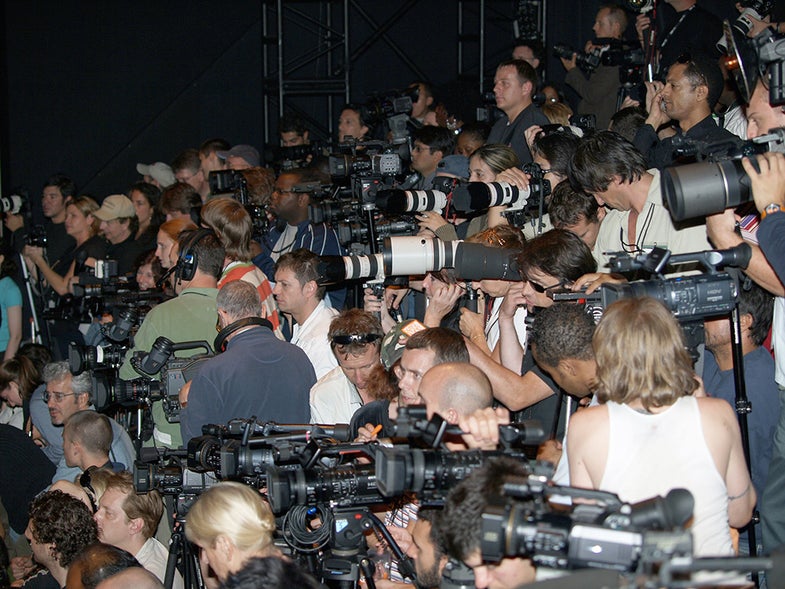
Fashion photographers are road warriors, traveling from New York to London, Milan, Paris and other points east and west to capture the latest runway looks. Yeah, it sounds glamorous but, in reality, shooting fashion shows can be challenging and there are no second chances. Before you hit the photo press pit, here are a dozen tips to help you bet the shots you need. Couldn’t get a pit pass for fashion week? Don’t worry. Most of the tips still apply to even the smallest show.
Streamline your gear
There’s barely enough room for photographers let alone a ton of gear. Your camera, a telephoto zoom (70-200mm, with a teleconverter for full-frame cameras), and a monopod should be all you need for a runway show (backstage and presentations are another story—see next slide). You might want to bring a plastic folding step-stool (often referred to as a Turtle) or a small hard case to stand on if you’re behind other photographers or to sit on if you’re positioned at the foot of the photo riser.

Backstage and Presentation Gear
A wide angle zoom like a 24-70mm lens, a flash and maybe a light modifier (a piece of cheesecloth attached with a rubber band can work to diffuse the light) are your best bets for backstage hair and make-up prep, and for formal presentations where the models stand on platforms for an hour or so.
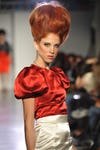
Use Manual (or aperture-priority) exposure mode
The main runway shows at New York Fashion Week are usually fairly well-lit so a shutter speed of 1/250th-1/500th of a second at f/4.0 works well to capture the models in stride and provide a relatively shallow depth-of-field. Adjust your ISO accordingly to achieve these settings. But be prepared to change any one of those settings quickly and intuitively (there’s no light in the photographer’s pit) since lighting may be uneven from one end of the runway to the other—even as much as a one or two stop difference.
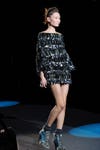
White Balance
If you’re there early enough to catch the run-through, check your white balance (and exposure settings) before the show starts. A good rule of thumb for most shows is adjusting the Kelvin temperature to between 3000-3200K. If the lighting is mixed, you may want to switch to Auto—I once shot a show where the lighting designer mixed daylight, tungsten, and moving colored spotlights. White balance insanity is a good case for shooting RAW.
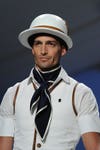
JPEG, RAW or Both?
Being able to adjust white balance, as well as other parameters, after the fact makes shooting RAW or RAW + JPEG almost a no-brainer (emphasis on “almost”). But fast turnaround times (images are now being published online minutes after a show end), continuous shooting speed and media card capacity argue against RAW capture. Determine what’s most important to you and your client. A lot of photographers shoot high resolution JPEGs only so they can quickly get images to clients and post them online.
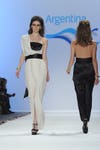
Autofocus and continuous shooting
You’ll hear machine-gun like sounds coming from some photographers’ cameras as they grab hundreds of images for each 10 minute runway show. Autofocus tracking and continuous shooting is the most automated method of shooting and works well if your camera’s AF can keep up with the models as they strut down the catwalk. Single-shot AF gives you more control so you can decide exactly when to trigger the shutter. Manual focus is possible: pre-focus on a specific spot on the runway; trigger the shutter when the model walks into your frame; repeat quickly.
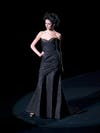
Center-weighted Metering
Center-weighted metering tends to work well, especially if the background is very dark or very light since wide or multi-area metering can be easily fooled. In some situations, you can underexpose just slightly to drop the background into black, eliminate the audience and create a dramatic shot.
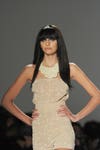
A trio of must-have shots
The three requisite shots are: full, head-to-toe; three-quarters; and a close-up of the face/upper torso. Use your zoom to get the best compositions anywhere along the runway, although—depending on your position—the general progression starts at the far end with the full shot, moving into ¾ and close-up as the model gets closer to you. Be sure to photograph the model as she or he retreats up the runway; sometimes the back of an outfit is surprisingly inte
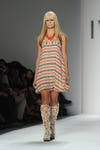
No soles of shoes…ever
Pace the model’s walk—count if you have to—and press the shutter when her or his front foot is flat on the floor. Male models have bigger feet, are less graceful and tend to show more soles than women, so be extra careful when the guys are strutting their stuff. The ideal shot is: front foot flat on the floor, arms at the side (or gently swinging), eyes open and straight ahead. Models look down when they turn so grab your “top shot” (the one closest to photographers) before she or he heads back up the runway
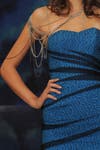
Pay Attention to Details
Designers work hard to style their models so pay attention and zoom in tight to grab close-up shots of interesting hair and make-up, jewelry, shoes, bags and other accessories. Even the sweep of a gown’s hem or an interesting textile can make a good shot.
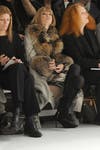
Keep an eye out for celebrities!
You need special credentials, at least in New York, to shoot the front row where the celebs sit but you can get some good shots from the photo riser before or during the show. The runway is lit better than the audience, of course, so pump up the ISO, open up the aperture or stop down the shutter speed to get the right exposure when you aim your lens at the sidelines.
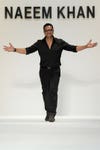
It’s Not Over ‘Til It’s Over
Once the models make their final walk, the designer will come out to take his or her bow so keep your lens focused at the far end of the runway. Some designers just peek out, so you have to be quick. Others, however, walk the length of the runway and happily pose for photographers.